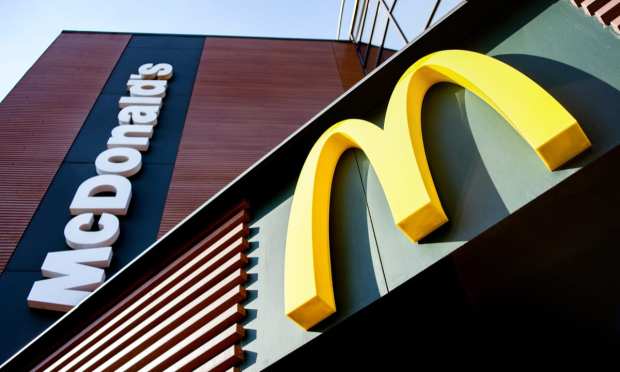McDonald’s, Chipotle, Starbucks And The QSR Post-Pandemic Comeback

It was a good, bordering on great, earnings day for McDonald’s as the nation’s premier fast food chain reported earnings and sales above analysts’ estimates. Earnings per share came in at $1.92 adjusted, above the $1.81 expected, while revenue increased 9 percent year on year to $5.12 billion versus $5.03 billion forecast by analysts pre-release. Globally, same store sales were up 7.5 percent in the quarter, surpassing 2019 levels.
Much of that growth was led by the U.S., where same-store sales jumped 13.6 percent — growth that McDonald’s U.S. President Joe Erlinger confirmed was largely driven by digital sales and the $1.5 billion they brought in during the first quarter.
The restaurant chain also boosted its guidance: The company now expects 2021 systemwide sales growth in the mid-teens, and improvement on the “low double digits” it was projecting back in January.
Needless to say, McDonald’s is Lovin’ It. Or at least in the U.S., as recovery on the global stage for McDonald’s has been quite a bit slower.
“Resurgences and operating restrictions persist in many parts of the world,” Chief Executive Officer Chris Kempczinski said in a statement announcing the results. Dining rooms remain closed in about 50 percent of McDonald’s locations in Europe.
But overall, Kempczinski noted on the call with investors, the trend seems to be pointing to a return to something that more resembles normal. Same-store sales in the U.S. were double-digit positive across breakfast, lunch and dinner, the company said on the call with investors — noting that the morning hours comeback indicates at least some workers are getting back to more normal schedules.
Chipotle Beats Estimates
McDonald’s isn’t the only quick-service restaurant (QSR) player reporting earnings this week pushed by the power of embracing digitization. Chipotle released Q1 earnings this week that also came out ahead of Wall Street estimates with EPS of $5.6 billion instead of the $4.89 billion expected and revenue of $1.74 billion, slightly ahead of the $1.73 billion forecast — a net sales increase of 23.4 percent. Same-store sales climbed 17.2 percent year on year, growth Chipotle credited to its expanded menu of both food and digital ordering items.
Digital sales were a particular source of power during the quarter — online orders accounted for 50.1 percent of total sales, while digital pick-up of online orders proved to be the most profitable digital trail for Chipotle, CFO Jack Hartung said on a calling with analysts. Chipotle has increased its delivery price by 4 percent in April and increased menu prices for delivery orders by an average of 13 percent.
“We haven’t seen a large amount of resistance from that, so I think that customers understand that a premium convenience experience has a premium cost associated with it,” said Chief Technology Officer Curt Garner said in an interview.
Also, perhaps notably, Chipotle reports consumers are returning to dining rooms as vaccines are distributed, but that in-person consumer and online consumers seem to draw from different customer segments and thus the increase of physical business is not negatively impacting its growing online customer base.
Mobile Ordering Strong At Starbucks
While Both McDonald’s and Chipotle reported strong quotes that sent the share prices up, Starbucks missed analyst estimates and saw its stock price down 9 percent post-release, as slow international recovery outweighed the chain’s 9 percent U.S. same-store sales growth.
Starbucks said growth has been pushed by the strength of its mobile ordering platform: mobile order transactions now make up 26 percent of total orders at U.S. company-operated retail stores, up 18 percent year on year, and mobile orders in China have doubled year on year.
On the company’s earnings call with analysts, President and CEO Kevin Johnson also noted that Starbucks is using its Deep Brew artificial intelligence (AI) engine to run predictive analytics that model vaccination progress in key markets around the globe and assess potential impact on international sales. The Deep Brew AI is also to personalize offers and suggestions via the Starbucks app.
“Our work in AI is providing Starbucks the underlying predictive models enabling us to fuel The Great Human Reconnection by freeing up partners to do what they do best — connect with customers and deliver a world-class customer experience,” Johnson said.
It might not have been enough to stop the firm’s stock price from falling 3 percent – but it is more evidence that Starbucks is aiming to stay at the edge of putting mobile technology on the menu.
Because after Q1 2021, there is no longer room for doubt that mobile is the secret spice every dining player in the QSR space now needs to keep their customers coming back.